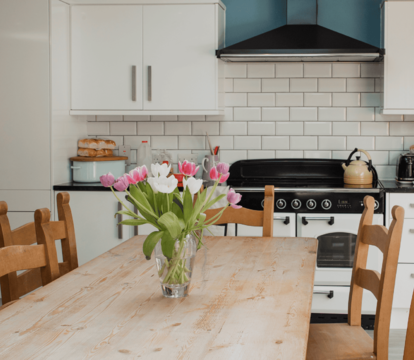Your guide to the conveyancing process
As an estate agent, head quartered in Sittingbourne, with 35 years experience selling properties across North Kent Quealy & Co know that selling a property can be a very confusing and lengthy process. Having a good solicitor or conveyancer will help the process to run as smoothly and efficiently as possible.
Our team at Quealy & Co have created a handy conveyancing guide so that if you are moving home in the Sittingbourne area, you know exactly what to expect when selling your home! If you are thinking of selling your home in 2024, do get in touch with us for a free, no obligation valuation of your home in Kent. We'd be delighted to talk you through the process.
Find a good Conveyancer
The conveyancing process formally starts when you have accepted an offer on the property.
However, it is recommended that you have a conveyancer in place before accepting an offer so that they can get the process started immediately and avoid delays on your property sale.
When it comes to choosing a conveyancer, speak to two or three and get some quotes before deciding who to go with. Speak with our team at Quealy & Co as we will be able to recommend too. Alternatively, if you have friends or family who have recently moved, find out who they used and if they were happy with them.
Don’t just go for the cheapest option, it could cause major issues further down the line if they cut corners! It will pay off to take the time to find a good conveyancer.
Sign the Conveyancer’s Letter of Engagement and Verify Your Identity
Once you have chosen a conveyancer and discussed the fees involved, you’ll need to sign their letter of engagement. It is only at this point that you commit to using their legal services. You will also need to verify your identity and address in the form of a passport or driving licence and supply a mortgage statement or utility bill for example.
Complete Questionnaires
Your conveyancer will send you some forms to complete, including a Property Information form and a Fittings & Contents form. It’s really important that you complete these honestly, as failure to do so could lead to delays later in the process.
The Property Information form is where you tell the buyer about any changes that have been made to the property, such as extensions, solar panels or a loft conversion. You will also need to provide any supporting documents you have, so if your double glazing is still under warranty or you have paperwork to show that your boiler has been serviced in the last 12 months, you will need to provide copies.
When it comes to fittings and contents, you don’t need to decide what you’re leaving anything behind at this point. You can confirm this later or leave it open to negotiation. Your conveyancer will be able to advise how to complete the form if you get stuck.
Speak to Your Mortgage Provider
If you have an outstanding mortgage on your property, you will need to contact your mortgage lender and inform them that you’re in the process of selling. Your provider will be able to advise you about paying off your outstanding balance when the sale goes through, or porting your mortgage, which essentially means transferring it to your new property.
Draft Contracts
When your conveyancer has received your completed forms, they will draw up a draft contract to send to the buyer’s conveyancer.
The contract will outline which fixtures and fittings are to be included, along with copies of all the supporting documents you have provided.
This contract will also give a date for completion.
The draft contract stage is usually the point where most of the negotiations take place, including the final price of the property.
This is also at this stage where you will need to allow for the buyers to have a surveyor come in and inspect the property. Depending on the answers you have provided in the questionnaire, the buyer may also want other professionals to come in and carry out inspections, such as a plumber or electrician.
They may also request that you pay for the costs of any further inspections or repairs, but you will be under no obligation to agree to this. However, it is at this point that a buyer may try to renegotiate on the final price of the property to take the extra costs into account.
Exchange of Contracts
Once the buyer is satisfied with the condition of your property and a final agreement has been reached on the price, including all fixtures and fittings, your conveyancer will exchange contracts with the buyer’s conveyancer.
Between Exchange and Completion
At this point both you and the buyer are fully committed to the sale of the property. If either party pulls out, they will open themselves up to legal action.
Completion
This is the day on which you hand over the keys to your property. The completion date is usually around two to four weeks after the date of exchange, but you can ask for this to be extended, or in some cases, shortened.
The date of completion is also the date on which you will receive the outstanding balance for the property from the buyer.
Do you need advice on conveyancing?
If you are planning on selling your home in the Sittingbourne area soon, why not call Quealy & Co on 01795 429836 or drop us an email at hello@quealy.co.uk . Our friendly and experienced team will be happy to advise you and help with your conveyancing needs.
Other Stories
28 March 2025
Design An Easter Egg Competition!
17 March 2025
Your March 2025 Property Market Update
09 March 2025

 by
by 



